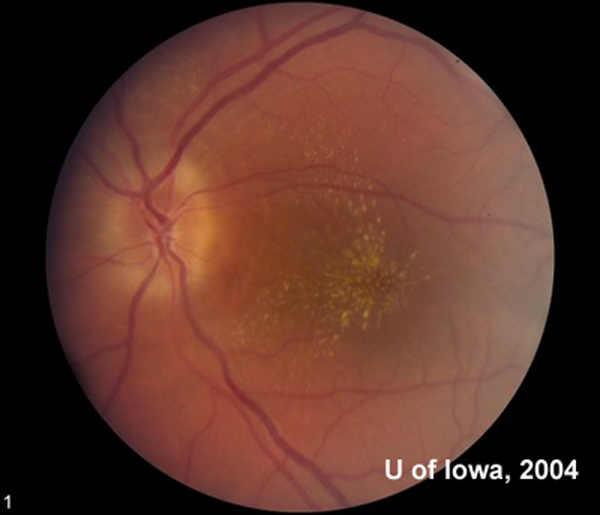
Cat Scratch Fever (Ocular bartonellosis)
This one was the patient encounter I remember most. I was working in commercial optometry at the time at a busy box store. The patient I was seeing hadn't been dilated in 5 years (probably more). I asked the patient if he would like to have a dilated eye exam today. He asked the benefits of dilation and I gave him my standard answer: "We are checking for diabetes, high blood pressure, and any holes, tears, or detachments but not limited to those things."
A dilated eye exam can tell us so many more things about the eyes beyond the things I listed. Syphilis, AIDS, and even 'Cat Scratch Fever' (nah nah nah) are 3 things I wouldn't even think to begin to list as something we would typically find in a routine exam, but are all things that are possible to find upon routine examination. This day, however, I found the one thing that I never wanted to find.
While using my BIO (a device that looks like a miner's hat used to evaluate the eyes) I found an area in the back of the eye that looked pigmented and elevated. Typically, the thing that I worry about the most during a dilated eye exam is a retinal detachment (when the 'seeing' part of the eye becomes detached and no longer works leading to blindness). In this specific case, I hoped that I was mistaken and the patient had a retinal detachment and not a melanoma, but in my heart I knew. This is the most obvious case I've experienced that a trip to a private optometrist may have saved this patient's life.

Choroidal Melanoma
At the time of diagnosis, only 4% of patients are known to have another type of cancer even with PET/CT scans. Over the following years, however, physicians usually find more tumors because at the time of diagnosis even PET/CT scans will not find microscopic tumors.
I have only seen one of these tumors in my 8 years of checking retinas and I hope it's my last.

